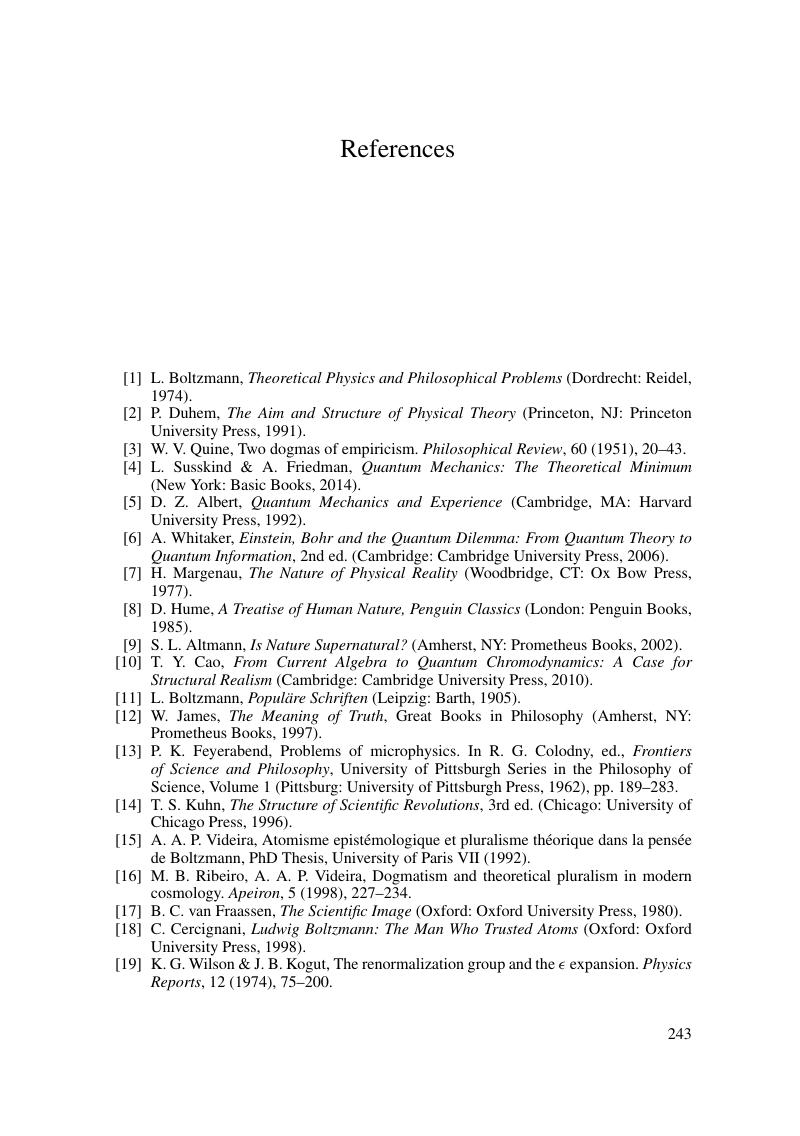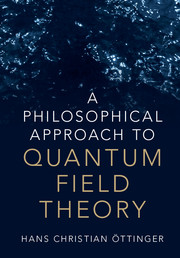Book contents
- Frontmatter
- Dedication
- Contents
- Preface
- Acknowledgments
- 1 Approach to Quantum Field Theory
- 2 Scalar Field Theory
- 3 Quantum Electrodynamics
- 4 Perspectives
- Appendix A An Efficient Perturbation Scheme
- Appendix B Properties of Dirac Matrices
- Appendix C Baker–Campbell–Hausdorff Formulas
- References
- Indexes
- References
References
Published online by Cambridge University Press: 21 December 2017
- Frontmatter
- Dedication
- Contents
- Preface
- Acknowledgments
- 1 Approach to Quantum Field Theory
- 2 Scalar Field Theory
- 3 Quantum Electrodynamics
- 4 Perspectives
- Appendix A An Efficient Perturbation Scheme
- Appendix B Properties of Dirac Matrices
- Appendix C Baker–Campbell–Hausdorff Formulas
- References
- Indexes
- References
Summary

- Type
- Chapter
- Information
- A Philosophical Approach to Quantum Field Theory , pp. 243 - 250Publisher: Cambridge University PressPrint publication year: 2018



